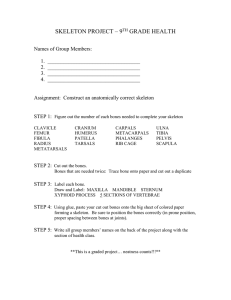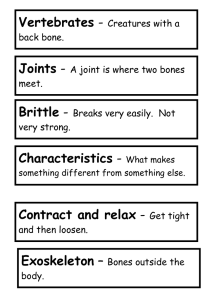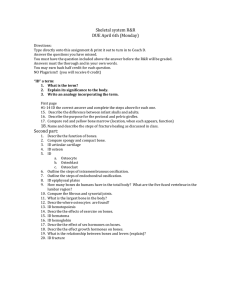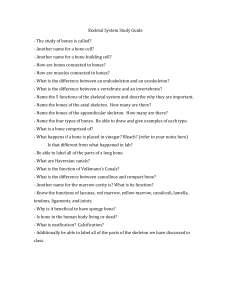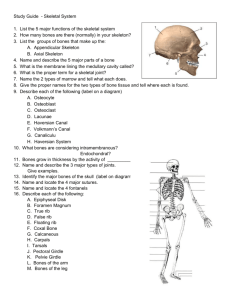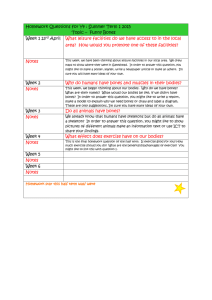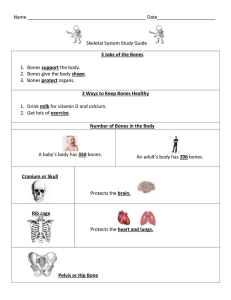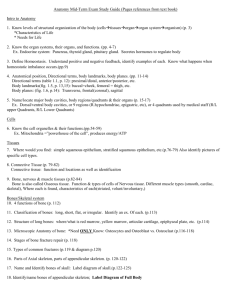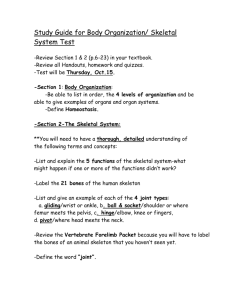Review for Biol 100 Midterm SPRING 99
advertisement
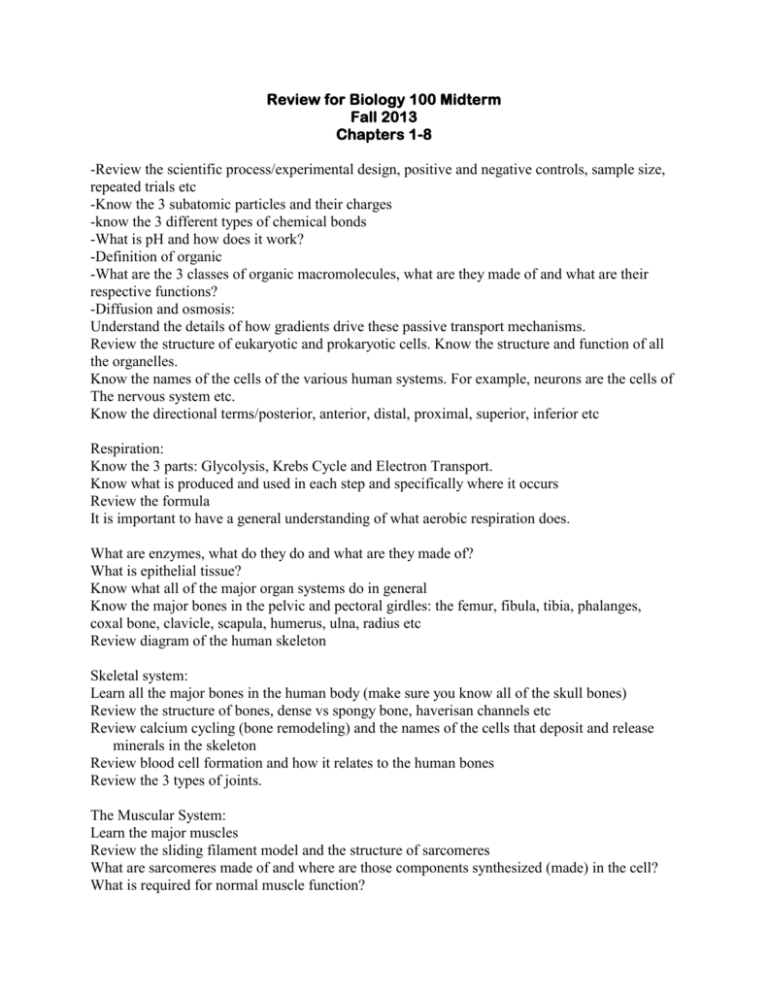
Review for Biology 100 Midterm Fall 2013 Chapters 1-8 -Review the scientific process/experimental design, positive and negative controls, sample size, repeated trials etc -Know the 3 subatomic particles and their charges -know the 3 different types of chemical bonds -What is pH and how does it work? -Definition of organic -What are the 3 classes of organic macromolecules, what are they made of and what are their respective functions? -Diffusion and osmosis: Understand the details of how gradients drive these passive transport mechanisms. Review the structure of eukaryotic and prokaryotic cells. Know the structure and function of all the organelles. Know the names of the cells of the various human systems. For example, neurons are the cells of The nervous system etc. Know the directional terms/posterior, anterior, distal, proximal, superior, inferior etc Respiration: Know the 3 parts: Glycolysis, Krebs Cycle and Electron Transport. Know what is produced and used in each step and specifically where it occurs Review the formula It is important to have a general understanding of what aerobic respiration does. What are enzymes, what do they do and what are they made of? What is epithelial tissue? Know what all of the major organ systems do in general Know the major bones in the pelvic and pectoral girdles: the femur, fibula, tibia, phalanges, coxal bone, clavicle, scapula, humerus, ulna, radius etc Review diagram of the human skeleton Skeletal system: Learn all the major bones in the human body (make sure you know all of the skull bones) Review the structure of bones, dense vs spongy bone, haverisan channels etc Review calcium cycling (bone remodeling) and the names of the cells that deposit and release minerals in the skeleton Review blood cell formation and how it relates to the human bones Review the 3 types of joints. The Muscular System: Learn the major muscles Review the sliding filament model and the structure of sarcomeres What are sarcomeres made of and where are those components synthesized (made) in the cell? What is required for normal muscle function? Blood: Know the functions of blood, where blood cells are made and from what precursor cells. What are the different types of blood cells/formed elements, what do they do and what are they called? Review how blood cells carry oxygen. What is the molecule that carries oxygen and what is it made of? ABO blood types; antibodies, antigens and compatibility Rh factor Review the process of red blood cell differentiation What is anemia and what are the various causes? Circulatory System: Review the Pulmonary and Systemic circuits; know the major differences between them Learn the pathway of blood and focus on how blood is oxygenated (pulmonary circuit) and deoxygenated (systemic circuit). Focus on diffusion in both circuits and how it maintains homeostasis Chambers of the heart
